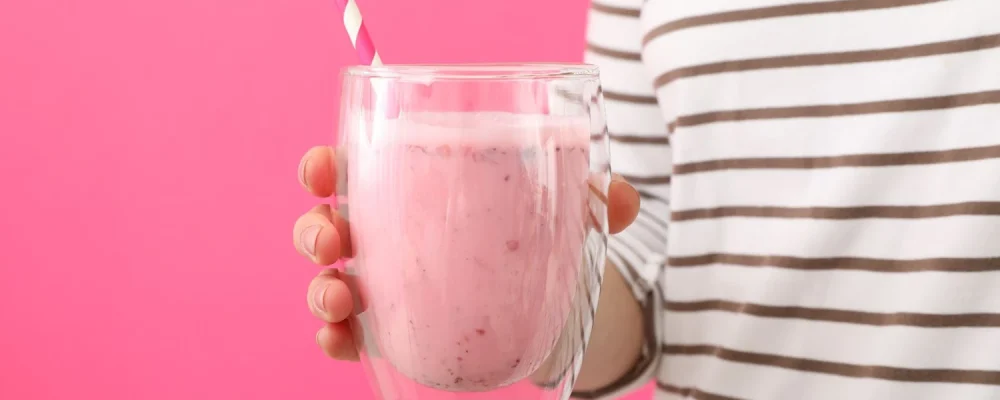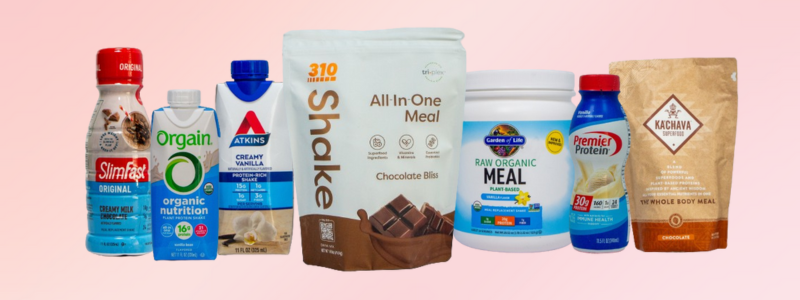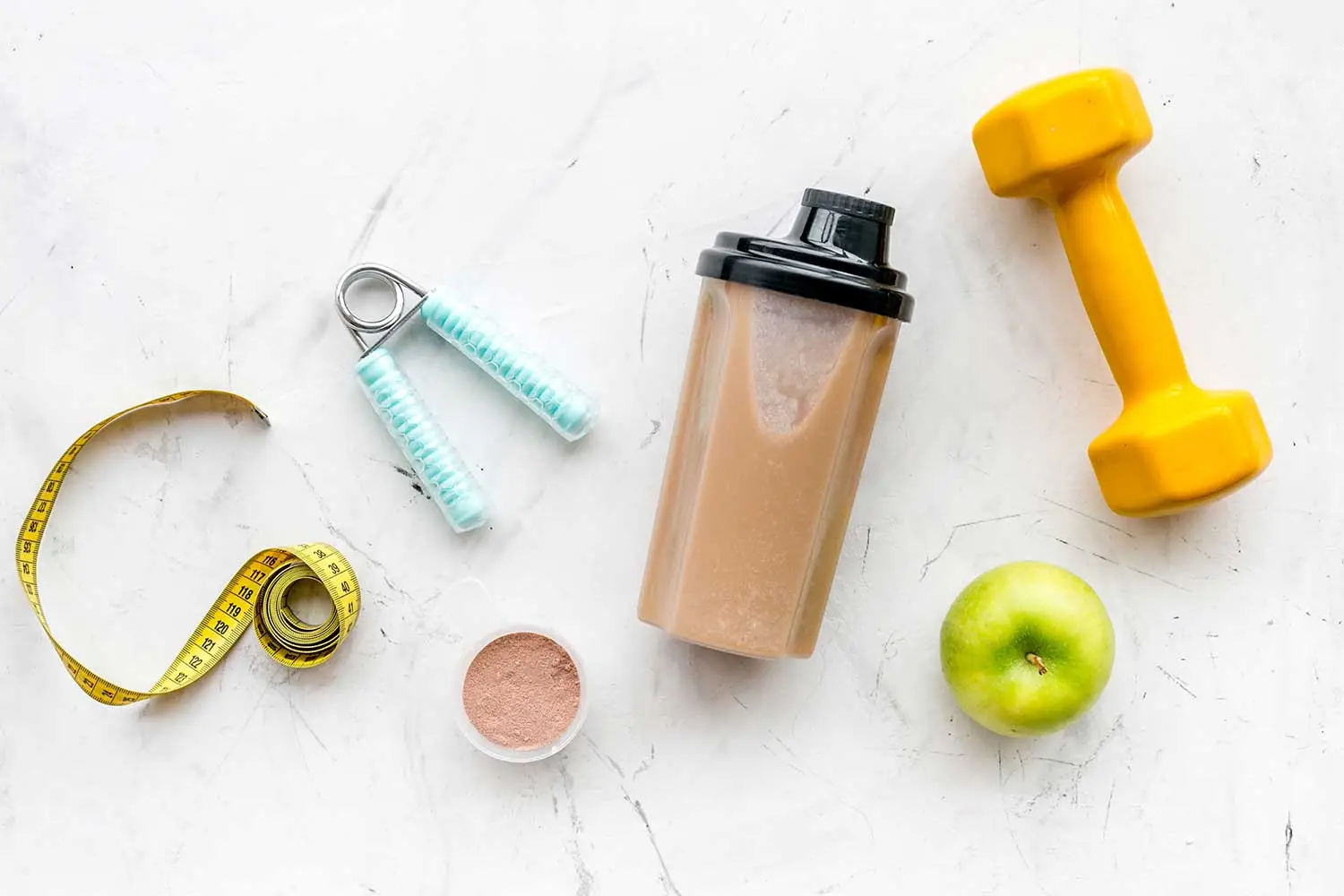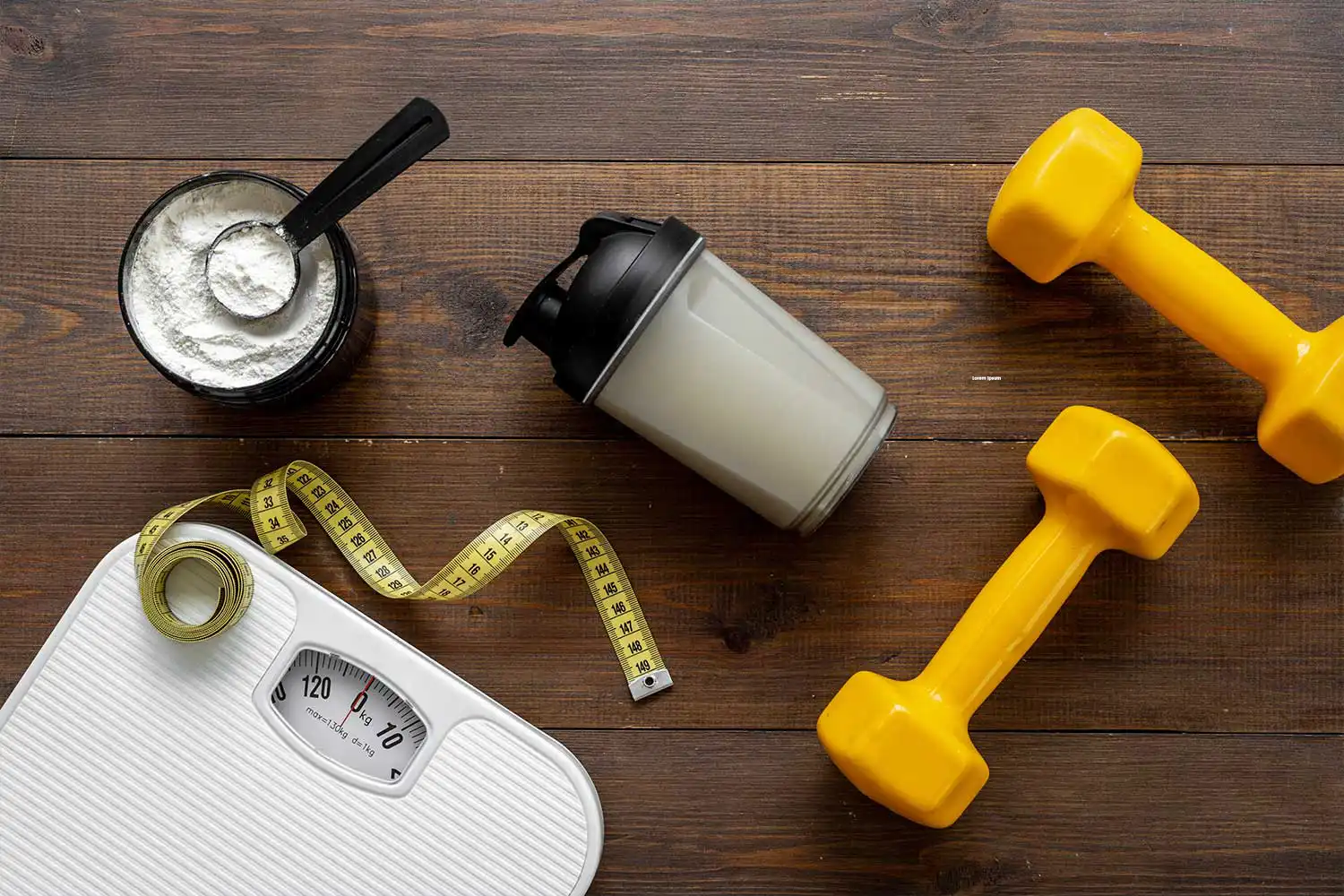We know you’ve been there (because we have to!). You’ve...
Finding time for a well-balanced meal can feel like an elusive goal in our hustle-and-bustle world. This is where meal replacement shakes come in handy. These convenient concoctions offer a quick and nutritious option to keep you fueled and satisfied. But why settle for store-bought when you can whip up homemade meal replacement shakes that cater to your taste buds and dietary needs?
In this comprehensive guide, we will break down what meal-replacement shakes are, share some delicious homemade shake recipes, and discuss their benefits, drawbacks, and safety considerations. By the time you’re done reading, you’ll be well-equipped to blend your way to delicious, nutritious shakes that’ll have you feeling energized and ready to tackle your day.
What Is A Meal Replacement Shake?
A meal replacement shake is like a full meal in a glass. It’s a drink you can have instead of a regular meal. These shakes are formulated to give your body the necessary nutrients, like proteins, vitamins, and minerals. They come in handy when you’re in a rush or need more time to cook. You can find them in stores, but you can also make them home with ingredients you like.
How to Make Homemade Meal Replacement Shakes?
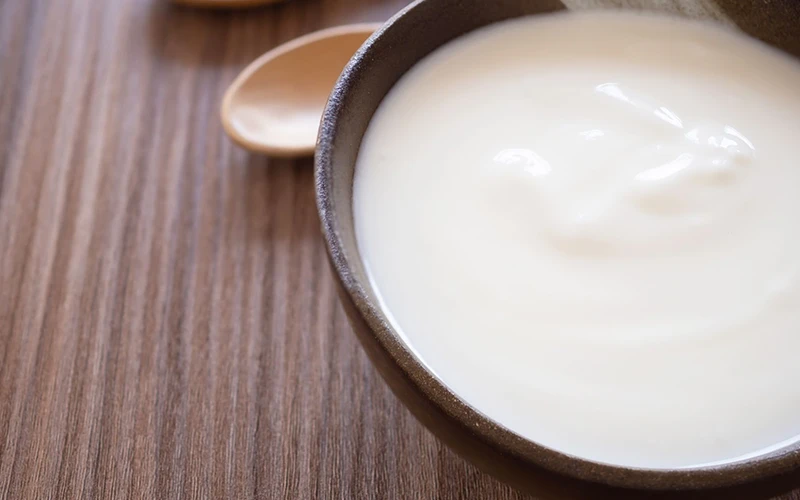
Making homemade meal replacement shakes is easy. It’s like playing with food in a blender! You start with a liquid base, like milk or water, add things like fruits, veggies, and proteins, and blend it all together. You can customize it to your taste and dietary needs. Plus, it’s a quick way to have a healthy meal, especially on busy days. We’ll show you all the steps and tips to make your homemade shakes delicious and nutritious.
Selecting the Right Base
Let’s start with the foundation of a killer meal replacement shake: the base. You’ve got to have a liquid element to make everything come together. Here are some homemade meal replacement shakes for your usual suspects:
Water: The calorie-free choice. It’s pure hydration but won’t add any creaminess or flavor.
Milk: Whether you prefer dairy milk, almond milk, soy milk, or any other milk alternative, this is where you can infuse some personality into your shake.
Yogurt: Greek yogurt or the regular stuff – bring thickness and a creamy texture to the party.
Juice: Fruit juices are an option but are higher in sugar, so use them cautiously.
The choice of base boils down to your taste buds and dietary restrictions. Water’s the go-to if you aim to cut back on calories. Milk or yogurt could be your sidekicks for that creamy texture and an extra protein punch.
Adding Proteins for Satiety and Muscle Support
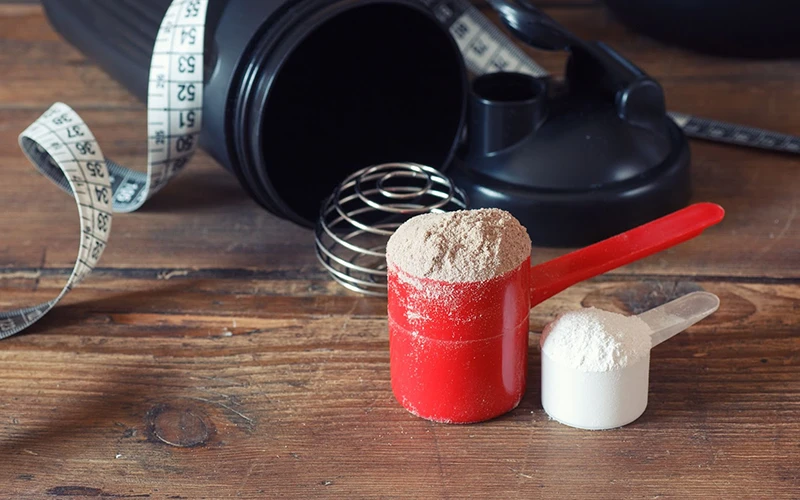
Proteins are the unsung heroes of meal replacement shakes. They’re the ones that make you feel full and help repair and build those muscles. You can try some protein meal replacement shake recipe that will help you add in protein:
Whey protein powder: Sourced from milk, this one’s a crowd-pleaser.
Plant-based protein powder: Pea, hemp, brown rice – these options cater to vegans and vegetarians.
Greek yogurt: It’s not just a base; it’s also a protein powerhouse.
Nut butter: Whether it’s peanut, almond, or cashew, nut butter brings creaminess and a protein punch.
Proteins aren’t just about keeping hunger at bay; they’re also about providing you with the stamina you need, especially if you’re replacing a meal with a shake.
Incorporating Healthy Fats
Now, let’s talk fats – the good kind, of course. Fats are the secret to a luscious texture and that mouthwatering flavor. Here’s what you can work with:
Avocado: Creaminess? Check. Healthy monounsaturated fats? Check.
Nut oils: Think almond or walnut oil; they add nutty goodness and healthy fats.
Coconut milk: Full-fat coconut milk brings a tropical twist to your shake.
Chia seeds: Beyond healthy fats, they contain omega-3 fatty acids and a thickening effect.
Balancing those healthy fats in your meal replacement shake is a game-changer. Not only does it amp up the flavor, but it also keeps you full and satisfied.
Including Nutrient-Dense Carbohydrates
Carbs are the ones who give you that quick energy fix, especially crucial in DIY meal replacement shakes. Go for nutrient-packed carb sources like:
Oats: They add fiber and a hearty texture.
Fruits: Bananas, berries, mangoes – these natural sweethearts offer sweetness without the sugar guilt.
Sweet potatoes: Roasted and cooled sweet potatoes can lend thickness and complex carbs to your shake.
Introducing carbs into your shake doesn’t just keep your energy levels up; it also wards off those mid-morning or mid-afternoon crashes.
Enhancing Flavor with Natural Sweeteners

Now, let’s sweeten the deal – but let’s do it healthily. Steer clear of those refined sugars and opt for natural sweeteners:
Honey: A touch of sweetness and unique flavor.
Maple syrup: A rich, distinctive taste that’s oh-so-satisfying.
Dates: Blend them up, and you get natural sweetness and fiber.
Stevia or erythritol: These calorie-free options are perfect for those watching their sugar intake.
A bit of sweetness goes a long way in making your shake a delightful experience, but remember to keep it in check.
Boosting Nutrition with Superfoods
Superfoods are like the rockstars of the nutritional world, and they can elevate the value of your shake. Think about adding:
Spinach or kale: Packed with vitamins and minerals, they’re like nature’s multivitamins.
Chia seeds: Beyond healthy fats, they bring fiber and antioxidants to the party.
Spirulina or wheatgrass: These green powders are nutritional powerhouses.
Berries: Blueberries, strawberries, and acai berries are antioxidant superheroes.
Superfoods don’t just level up your nutrition game; they also add vibrant colors and unique flavors to your shake.
Using Spices and Flavorings
Alright, it’s time to jazz things up. Spices and flavorings can take your shake from ho-hum to oh-wow:
Cinnamon: It adds warmth and sweetness without the calories.
Vanilla extract: A few drops can elevate the flavor profile.
Cocoa powder: Want a chocolatey twist without the added sugar? This is your go-to.
Nutmeg or cardamom: These spices offer exotic, unique flavors.
Be bold about experimenting with different spices and flavorings once you find your signature shake.
Blending Techniques and Tips
Here’s the scoop on blending – it’s not just about hitting the “on” button. Here’s how to get that velvety texture:
Start with liquids: Pour your liquid base into the blender first.
Add solids next: Drop in your proteins, fats, and carbs.
Top with ice: If you like frosty, toss some ice cubes.
Blend in stages: Begin on low speed, then gradually crank it up to high for that consistent texture.
Blend long enough: Keep going until all those visible chunks vanish.
The right blending technique can make or break your homemade meal replacement shake – so blend with care!
Customizing Shakes for Specific Dietary Needs
Homemade meal replacement shakes are all about flexibility. You can tweak them to fit your dietary preferences and requirements:
Vegan or vegetarian: Go for plant-based proteins and milk alternatives.
Low-calorie: Use water as your base and go easy on fats and sweeteners.
High-protein: Add an extra scoop of protein powder or throw in some Greek yogurt.
Low-carb: Trim down on carbs by using more veggies and fewer fruits.
Allergy-friendly: Steer clear of ingredients you’re allergic to and opt for suitable alternatives.
Your shake, your rules. Tailor it to your tastes and dietary restrictions – that’s the beauty of homemade.
Storing and Preparing Homemade Meal Replacement Shakes
Planning with your shakes can be a game-changer if you’re always on the move. Here’s the lowdown on storing and prepping:
Portion it out: Measure your ingredients for each shake and stash them in ziplock bags or containers.
Freeze your fruits: Pre-cut them to be tossed into your shakes.
Label your containers: Keep things organized by clearly marking what’s inside and the date.
Keep it cold: If you won’t slurp your shake immediately, store it in the fridge or a cooler bag with ice packs.
A little planning goes a long way – you’ll have a ready-to-blend recipe for meal replacement shake at your fingertips.
Delicious Homemade Shake Recipes
Now that you’ve got the lowdown on meal replacement shake creation basics let’s dive into some delectable recipes for meal replacement shakes to ignite your culinary imagination.
Oats Shake
Ingredients:
- 1/2 cup rolled oats
- 1 cup milk (dairy or plant-based)
- 1 ripe banana
- 1 tablespoon honey or maple syrup
- 1/2 teaspoon cinnamon
- 1/4 teaspoon vanilla extract
- Ice cubes (optional)
Instructions:
- Begin by tossing your oats into the blender and blitzing them until they become a fine powder.
- Next, add the remaining ingredients to your blender.
- Blend until you achieve a smooth and creamy consistency.
- If you prefer your shake cold, toss a few ice cubes.
- Pour it into a glass, kick back, and savor your homemade oat-filled delight!
Rice & Banana Milk Shake
Ingredients:
- 1/2 cup cooked rice (white or brown)
- 1 cup milk (dairy or plant-based)
- 1 ripe banana
- 1 tablespoon honey or maple syrup
- 1/4 teaspoon vanilla extract
- A pinch of ground nutmeg
- Ice cubes (optional)
Instructions:
- Combine your cooked rice, milk, banana, honey, vanilla extract, and nutmeg in the blender.
- Blend until everything is smoothly combined and your shake reaches that perfect consistency.
- If you want to add a chilly note, throw some ice cubes.
- Pour, sip it into a glass, and enjoy the intriguing flavor.
Chocolate Almond Shake
Ingredients:
- 2 tablespoons unsweetened cocoa powder
- 1 cup almond milk
- 1/4 cup Greek yogurt
- 1 tablespoon almond butter
- 1 ripe banana
- 1-2 tablespoons honey or maple syrup (adjust to taste)
- Ice cubes (optional)
Instructions:
- Place cocoa powder, almond milk, Greek yogurt, almond butter, banana, and sweetener in the blender.
- Blend away until everything is thoroughly mixed and your shake is velvety.
- Toss some ice cubes if you’re in the mood for an icy sensation.
- Pour it into a glass, and brace yourself for the delightful taste of chocolate and almonds.
These recipes are just the beginning. Feel free to experiment with different ingredients and ratios to create shakes that suit your taste buds.
Benefits of Homemade Meal Replacement Shakes
Now that we’ve got our creative juices flowing and our taste buds tingling, let’s explore the numerous benefits of homemade meal replacement shakes:
Nutritional Control: You’re in the driver’s seat when you craft your shakes, ensuring every ingredient aligns with your dietary preferences and needs.
Customization: Homemade shakes are your canvas. You can tailor them to support specific goals, whether weight loss, muscle gain, or a well-rounded meal.
Convenience: Life gets busy. Homemade shakes are quick to whip up and easy to take on the go, making them a convenient choice for our hectic lifestyles.
Cost-Effective: Making your shakes can be kinder to your wallet than buying pre-made options.
Freshness: With homemade, there are no secrets. You know precisely what’s going into your shake, guaranteeing the freshest, highest-quality ingredients.
Variety: The world is your oyster when it comes to ingredient combinations. With homemade shakes, you’ll always enjoy your meals.
Healthier Alternatives: Skip the additives and preservatives commonly found in store-bought shakes – that’s the beauty of homemade.
Weight Management: Many individuals find meal replacement shakes helpful in managing calorie intake, which can support their weight management goals.
Post-Workout Recovery: Shakes packed with protein can aid muscle recovery after a vigorous workout.
The benefits of homemade meal replacement shakes are aplenty, making them a valuable addition to your daily routine. However, it’s worth considering how they stack up against commercial alternatives. For a closer look at this comparison, check out our section on DIY vs. Commercial Meal Replacement Shakes.
Possible Drawbacks of a Homemade Meal Replacement Shake
While homemade meal replacement shakes offer many advantages, it’s essential to be aware of their potential drawbacks:
Lack of Fiber: Some homemade shakes may fall short in the fiber department, which is crucial for digestion and sustained fullness. Ensure you incorporate fiber-rich ingredients like oats or chia seeds.
Balancing Act: Crafting a well-balanced shake requires attention to detail. It’s easy to overdo or underdo certain nutrients if you must be careful.
Not a Magic Bullet: Meal replacement shakes aren’t a substitute for whole foods. They should complement a balanced diet rather than replace it entirely.
Taste Variability: Homemade shakes can vary in taste and texture, which may not align with everyone’s preferences.
Possible Allergens: If you have food allergies, exercise caution when making your shakes to avoid allergenic ingredients.
Despite these drawbacks, with proper planning and focusing on nutritional balance, homemade meal replacement shakes can be a valuable part of your diet.
Safety Considerations
Now that you’re well-acquainted with the pros and cons of homemade meal replacement shakes, let’s dive into some safety considerations to ensure you enjoy them responsibly:
Stay Hydrated: Remember that meal replacement shakes can’t replace good old H2O. Keep yourself hydrated throughout the day.
Caloric Needs: Be mindful of your daily calorie requirements. Ensure your shake meets your energy needs and doesn’t leave you malnourished.
Variety Matters: While shakes are convenient, rely on them sparingly. A diverse diet is essential for overall health.
Allergies Alert: If you have food allergies or sensitivities, carefully inspect ingredient labels and prevent cross-contamination during shake preparation.
Consult a Pro: If you’re using meal replacement shakes for weight management or have specific health concerns, it’s wise to seek guidance from a healthcare professional or a registered dietitian.
By adhering to these safety considerations, you can indulge in homemade meal replacement shakes as a convenient and nutritious diet component.
FAQs
How are meal replacement shakes different from protein shakes?
Great question! Meal replacement shakes are designed to be a complete meal in liquid form. They provide a balanced mix of proteins, fats, carbohydrates, vitamins, and minerals. They’re meant to replace a full meal. On the other hand, protein shakes are more focused on delivering protein and are often consumed as supplements to support muscle recovery and growth.
Can homemade meal replacement shakes provide all the necessary nutrients for a complete meal?
Absolutely. When carefully crafted, homemade meal replacement shakes can offer a comprehensive blend of nutrients, including proteins, fats, carbohydrates, fiber, vitamins, and minerals. The key is to select various ingredients to ensure a well-rounded nutritional profile.
How can I customize my homemade meal replacement shake to suit my dietary preferences and needs?
You’re in the driver’s seat! Customize your shake by choosing ingredients that align with your dietary requirements. For example, go for plant-based proteins and milk alternatives if you’re vegan. If you aim for weight loss, trim down on calorie-dense ingredients and focus on fiber-rich options. Make it your own, and adjust it to meet your specific goals and preferences.
Are homemade meal replacement shakes suitable for weight loss or weight management?
Absolutely. Homemade meal replacement shakes can be valuable for weight loss or management. By thoughtfully controlling the ingredients and portion sizes, you can create shakes that support your calorie and nutrient needs while helping you stay satisfied.
Can homemade meal replacement shakes be used to supplement my regular meals occasionally?
Certainly! Homemade meal replacement shakes can seamlessly blend into your diet as a convenient option when you’re short on time or want to keep your calorie intake in check. However, it’s crucial to maintain a balanced diet that incorporates whole foods for long-term health.
What key ingredients should I include in my homemade meal replacement shake?
The essentials for a well-rounded meal replacement shake include a source of protein (think protein powder or Greek yogurt), healthy fats (like avocado or nut butter), complex carbohydrates (such as oats or sweet potatoes), and a variety of fruits and vegetables to pack in the vitamins and minerals.
Are homemade meal replacement shakes suitable for athletes or those with specific dietary goals?
Indeed. Homemade meal replacement shakes can be tailored to meet the needs of athletes and individuals with specific dietary goals. Athletes may require higher protein content, while those with dietary restrictions can fine-tune their shakes accordingly. Consulting with a nutritionist or dietitian can provide you with personalized guidance.
Final Thoughts
Homemade meal replacement shakes are a canvas for culinary creativity and a convenient way to ensure you get the nutrients you need, even on your busiest days. You can blend delicious, nutritious shakes that support your health and dietary goals by choosing the right ingredients, customizing your shakes, and following safety guidelines.
Don’t be afraid to experiment with flavors, textures, and ingredients – your taste buds will thank you. Whether you’re on a weight loss journey, need a quick breakfast, or want to recharge after a workout, homemade meal replacement shakes can be your secret weapon for a healthier and more convenient lifestyle. So grab that blender, toss in some wholesome ingredients, and get shaking – a better you awaits!
RV Team
Related Articles
Best Meal Replacement Shakes for Weight
Meal replacement shakes for weight loss are specially formulated nutritional...
How to Use Meal Replacement Shakes
Meal replacement shakes are basically those handy-dandy drinks that come...
Can Meal Replacement Shakes Help You
Can Meal Replacement Shakes Help You Lose Weight? Meal replacement...
* Reviewology is in partnership or collaborates with top brands highlighted on this site, including those occupying the top ranking positions.
Additionally, we earn affiliate commissions from products showcased on this website when you make a purchase through the provided links on Amazon or the company website directly.
We appreciate your support using our links to purchase your favorite brands or newly discovered brands.
Latest updates
I Thought I’d Always Feel Tired, Fat, and Forgotten—Until This
310 Greens vs AG1
The Truth About 310 Greens: A No-Nonsense Review of This Popular Supplement
Popular
I Thought I’d Always Feel Tired, Fat, and Forgotten—Until This
310 Greens vs AG1
The Truth About 310 Greens: A No-Nonsense Review of This Popular Supplement
© 2024 Reviewology. All Rights Reserved.
